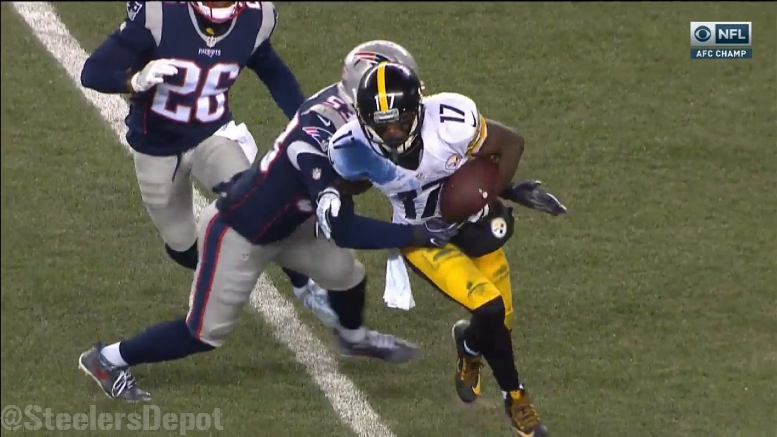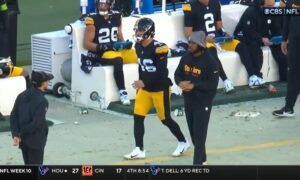It should probably go without saying that the Pittsburgh Steelers lost in the ever-important Toxic Differential against the Patriots. The Toxic Differential tallies the number of turnovers and explosive plays and churns out a plus-minus number that is believed to be highly correlated to predicting the winner of the game.
But the Steelers didn’t simply lose the Toxic Differential to the Patriots; they got annihilated by an 8-2 ratio, tied for the worst differential with the regular-season loss to the Dolphins. And Pittsburgh’s two explosive plays came late in the game at a point in which it didn’t really mean much of anything.
New England’s defense forced two turnovers by intercepting an errant deep target from Ben Roethlisberger and stripping the ball loose from Eli Rogers in the second half. The Patriots’ offense turned both of those takeaways into scored that iced the game.
It was not just the regular-season’s leading defense in terms of points allowed that did its part. New England’s offense contributed six explosive plays through the air, with Tom Brady finding Chris Hogan for five of them en route to an 180-yard, two-touchdown day.
The only explosive plays that the Steelers are able to muster came with the came more or less already out of reach. The Patriots scored a touchdown after recovering Rogers’ fumble deep into Steelers territory. Roethlisberger began the ensuing drive with a deep pass caught by Sammie Coates for 30 yards, but that drive ultimately resulted in a turnover on downs at the two-yard line.
The second and final explosive play conducted by the Steelers’ offense also just so happened to be their final offensive play of the day when Roethlisberger connected with Cobi Hamilton for a score from 30 yards own with under four minutes left to play and trailing by three possessions after the touchdown and two-point conversion.
The Steelers brought with them into the game up in Foxboro the longest active takeaway streak in the league, but that proved to be useless against a Patriots offense that had every answer for the few blitzes Pittsburgh’s defense was willing to send and which picked apart their coverage and took advantage of every miscommunication.
Nor did it matter that Pittsburgh’s offense rivaled the best in the league at the start of the season when it came to hitting on the big plays. Their explosive component gradually subsided over the course of the year when they lost their big-play threats due to injuries.








